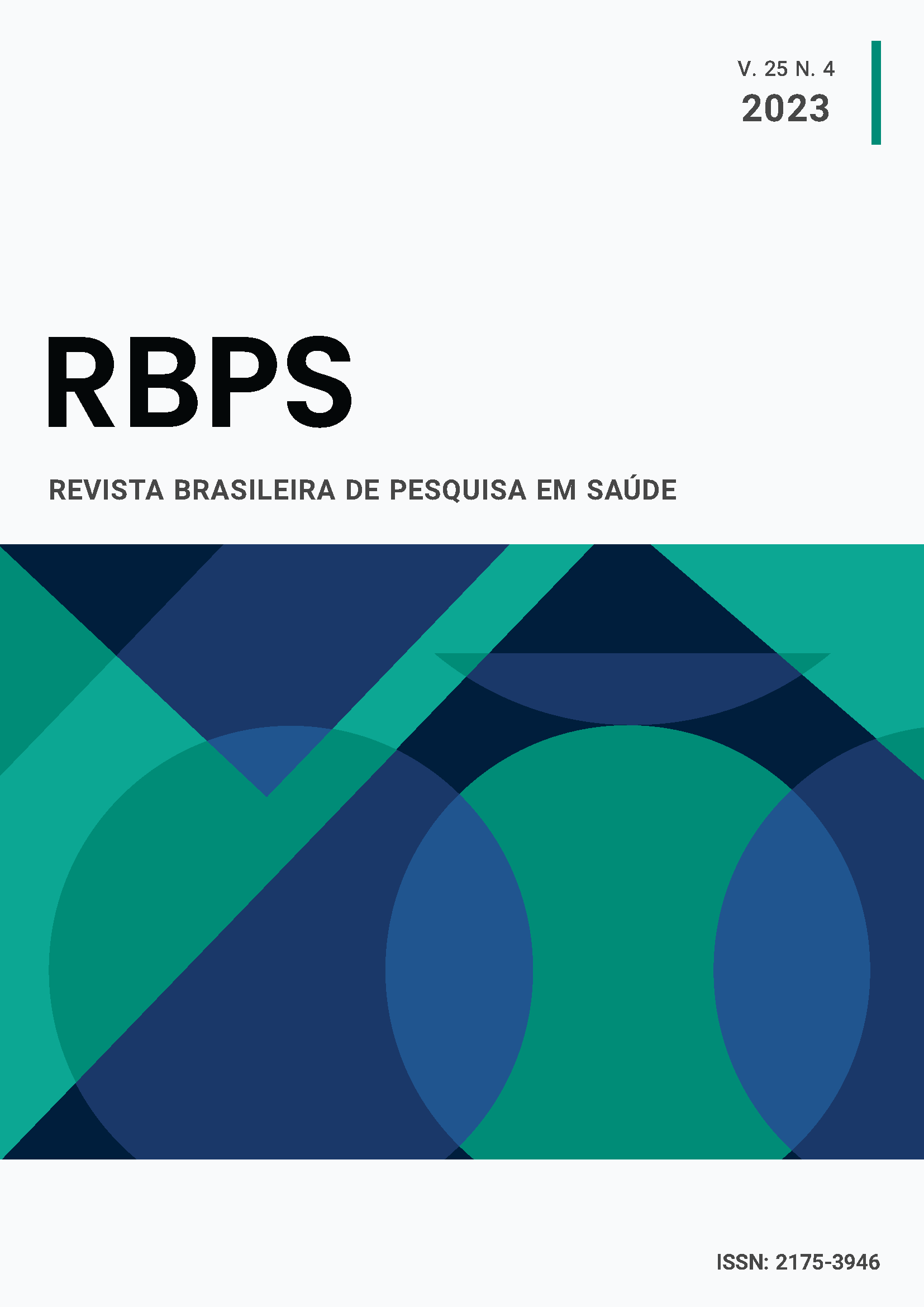Analysis of the energy content of human milk using the creamatocrit technique according to the form of milk extraction in mothers of preterm newborns
DOI:
https://doi.org/10.47456/rbps.v25i4.40684Keywords:
Human milk, Milk extraction, Premature newbornAbstract
Introduction: Generally, preterm newborns cannot be fed orally and human milk can be expressed (by manual expression or with the aid of a pump) and administered by gastric tube. The human milk of the mothers of these newborns has macronutrients in different concentrations, when compared to the milk of the mothers of full-term newborns. However, the effect of the different techniques of expressing breast milk on the composition of macronutrients and energy content is still unclear. Objective: To evaluate and compare the energy content of raw human milk from mothers of preterm newborns according to the way of expression. Methods: Aliquots of 0.5 ml of raw human milk extracted by electric pump and manual milking were evaluated, first determining the creamatocrit and then, through the application of mathematical formulas, the energy content. Results: 114 samples of raw human milk (colostrum and mature milk) extracted by electric pump and manual milking were evaluated. The average energy content obtained was 53.9 ± 11.6 kcal/dl in pump extraction and 58.2 ± 14.2 kcal/dl in colostrum and the average energy content in mature milk was 61.7 ± 13.2 kcal/dl in pump extraction and of 64.7 ± 13.1 kcal/dl. However, the differences are not statistically significant. Conclusion: The milking method does not seem to interfere with the energy content of human milk from mothers of preterm newborns.
Downloads
References
An official position statement of the Association of Women’s Health, Obstetric and Neonatal Nurses. Breastfeeding and the Use of Human Milk. J Obstet Gynecol Neonatal Nurs. 2021; 50(5):e1-e5.
Cerasani J, Ceroni F, De Cosmi V, et al. Human Milk Feeding and Preterm Infants’ Growth and Body Composition: A Litera¬ture Review. Nutrients. 2020; 12(4):1155.
Underwood MA. Human milk for the premature infant. Pediatr Clin North Am. 2013; 60(1):189-207.
Boquien CY. Human Milk: An Ideal Food for Nutrition of Preterm Newborn. Front Pediatr. 2018; 6:295.
Mosca F, Giannì ML. Human milk: composition and health ben¬efits. Pediatr Med Chir. 2017; 39(2):155
Bauer J, Gerss J. Longitudinal analysis of macronutrients and minerals in human milk produced by mothers of preterm infants. Clin Nutr. 2011; 30(2):215-20.
Lau C. Development of infant oral feeding skills: what do we know? Am J Clin Nutr. 2016; 103(Suppl):616S-21S
Becker GE, Smith HA, Cooney F. Methods of milk expres¬sion for lactating women. Cochrane Database Syst Rev. 2016; 9(9):CD006170.
Dhanawat A, Behura SS, Panda SK. Manual Method vs Breast Pump for Breast Milk Expression in Mothers of Preterm Babies During First Postnatal Week: A Randomized Controlled Trial. Indian Pediatr. 2022; 59(8):608-612.
Eglash A, Malloy ML. Breastmilk Expression and Breast Pump Technology. Clin Obstet Gynecol. 2015; 58(4):855-67.
Wang CD, Chu PS, Mellen BG, Shenai JP. Creamatocrit and the nutrient composition of human milk. J Perinatol. 1999; 19(5):343-6.
Haiden N. Postdischarge Nutrition of Preterm Infants: Breast¬feeding, Complementary Foods, Eating Behavior and Feeding Problems. Nestle Nutr Inst Workshop Ser. 2021; 96:34-44.
Lin YH, Hsu YC, Lin MC, Chen CH, Wang TM. The association of macronutrients in human milk with the growth of preterm infants. PLoS One. 2020; 15(3):e0230800
Choi A, Fusch G, Rochow N, Sheikh N, Fusch C. Establishment of micromethods for macronutrient contents analysis in breast milk. Matern Child Nutr. 2015; 11(4):761-72.
Kociszewska-Najman B, Borek-Dzieciol B, Szpotanska-Sikorska M, Wilkos E, Pietrzak B, Wielgos M. The creamatocrit, fat and energy concentration in human milk produced by mothers of preterm and term infants. J Matern Fetal Neonatal Med. 2012; 25(9):1599-602.
Tie WJ, Kent JC, Tat Lai C, Rea A, Hepworth AR, Murray K, Ged¬des DT. Reproducibility of the creamatocrit technique for the measurement of fat content in human milk. Food Chem. 2021.
Mangel, L. et al. Higher Fat Content in Breastmilk Expressed Man¬ually: A Randomized Trial. Breastfeed Med. 2015; 10(7):352-4.
Morton J et al. Combining hand techniques with electric pump¬ing increases the caloric content of milk in mothers of preterm infants. J Perinatol 2012; 32(10):791-6.
Prime DK, Garbin CP, Hartmann PE, Kent JC. Simultaneous breast expression in breastfeeding women is more efficacious than sequential breast expression. Breastfeed Med. 2012; 7(6):442-7.
da Silva CBM, do Valle BV, de Matos ÚMA, Villarosa do Ama¬ral YND, Moreira MEL, Vieira AA. Influence of different breast expression techniques on human colostrum macronutrient con¬centrations. J Perinatol. 2021; 41(5):1065-1068.
Perrella S, Gridneva Z, Lai CT, Stinson L, George A, Bil¬ston-John S, Geddes D. Human milk composition promotes optimal infant growth, development and health. Semin Perina¬tol 2021; 45(2):151380.
Downloads
Published
How to Cite
Issue
Section
License
Copyright (c) 2023 Brazilian Journal of Health Research

This work is licensed under a Creative Commons Attribution-NonCommercial-NoDerivatives 4.0 International License.
Authors and reviewers must disclose any financial, professional, or personal conflicts of interest that could influence the results or interpretations of the work. This information will be treated confidentially and disclosed only as necessary to ensure transparency and impartiality in the publication process.
Copyright
RBPS adheres to the CC-BY-NC 4.0 license, meaning authors retain copyright of their work submitted to the journal.
- Originality Declaration: Authors must declare that their submission is original, has not been previously published, and is not under review elsewhere.
- Publication Rights: Upon submission, authors grant RBPS the exclusive right of first publication, subject to peer review.
- Additional Agreements: Authors may enter into non-exclusive agreements for the distribution of the RBPS-published version (e.g., in institutional repositories or as book chapters), provided the original authorship and publication by RBPS are acknowledged.
Authors are encouraged to share their work online (e.g., institutional repositories or personal websites) after initial publication in RBPS, with appropriate citation of authorship and original publication.
Under the CC-BY-NC 4.0 license, readers have the rights to:
- Share: Copy and redistribute the material in any medium or format.
- Adapt: Remix, transform, and build upon the material.
These rights cannot be revoked, provided the following terms are met:
- Attribution: Proper credit must be given, a link to the license provided, and any changes clearly indicated.
- Non-Commercial: The material cannot be used for commercial purposes.
- No Additional Restrictions: No legal or technological measures may be applied to restrict others from doing anything the license permits.

























